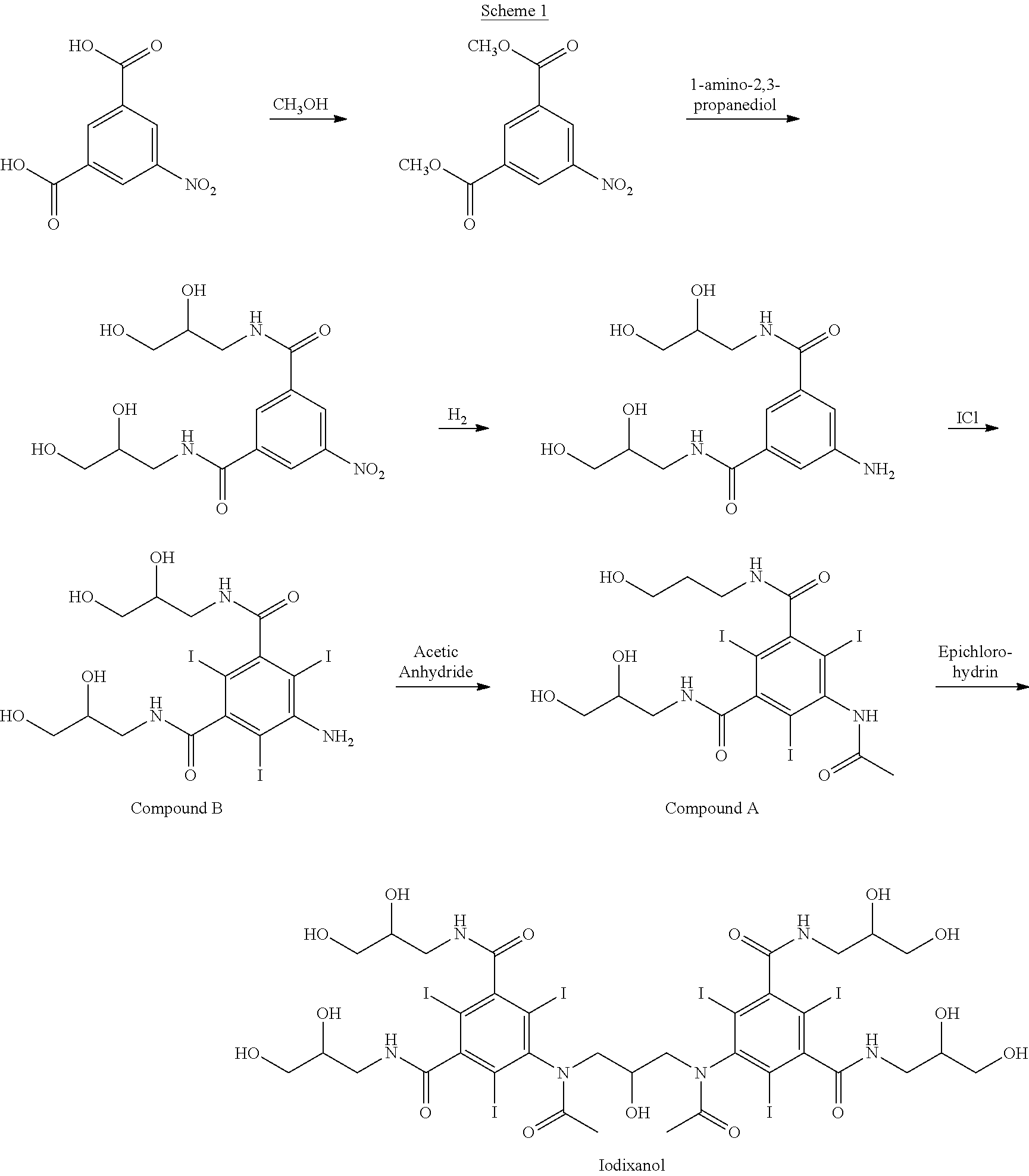Recovering unreacted intermediate from desalinated and desolventized dimerisation reaction mixture by ultrafiltration
a dimerization reaction and unreacted intermediate technology, applied in the field of industrial preparation of iodixanol, can solve the problems of secondary production cost and efficiency depend, and achieve the effect of minimizing the waste of compound a
- Summary
- Abstract
- Description
- Claims
- Application Information
AI Technical Summary
Benefits of technology
Problems solved by technology
Method used
Image
Examples
example 1
A reaction mixture containing about 340 kg iodixanol and substantial amounts of Compound A (about 14-18 w / w % relative to iodixanol) and iohexol (6-8 w / w % relative to iodixanol) is subjected to nanofiltration. Water is added continuously to facilitate diafiltration followed by volume reduction. A final salt concentration of about 0.60 w / w % relative to iodixanol (2.0 kg NaCl in 340 kg iodixanol) is obtained. At this stage, the reaction medium is aqueous with the pH between about 4 and 6. Compound A is precipitated on the retentate side of the nanofiltration membrane due to reduced salt and organic solvent content. The organic solvent is 2-methoxyethanol.
The precipitated Compound A is removed from the process solution by ultrafiltration using a Pallsep™ PS400 vibrating membrane system at ambient temperature with the pH between about 5 and 7.5. At the end of the ultrafiltration step water is added continuously to facilitate diafiltration in order to flush out any remaining iodixanol ...
example 2
A reaction mixture containing about 340 kg iodixanol and substantial amounts of Compound A (about 14-18 w / w % relative to iodixanol) and iohexol (6-8 w / w % relative to iodixanol) is subjected to nanofiltration. Water is added continuously to facilitate diafiltration followed by volume reduction. A final salt concentration of about 0.60 w / w % relative to iodixanol (2.0 kg NaCl in 340 kg iodixanol) is obtained. At this stage, the reaction medium is aqueous with the pH between about 4 and 6. Compound A is precipitated on the retentate side of the nanofiltration membrane due to reduced salt and organic solvent content. The organic solvent is methanol.
The precipitated Compound A is removed from the process solution by ultrafiltration using a Pallsep™ PS400 vibrating membrane system at ambient temperature with the pH between about 5 and 7.5. At the end of the ultrafiltration step water is added continuously to facilitate diafiltration in order to flush out any remaining iodixanol on the r...
PUM
| Property | Measurement | Unit |
|---|---|---|
| density | aaaaa | aaaaa |
| weight content | aaaaa | aaaaa |
| weight | aaaaa | aaaaa |
Abstract
Description
Claims
Application Information
 Login to View More
Login to View More - R&D
- Intellectual Property
- Life Sciences
- Materials
- Tech Scout
- Unparalleled Data Quality
- Higher Quality Content
- 60% Fewer Hallucinations
Browse by: Latest US Patents, China's latest patents, Technical Efficacy Thesaurus, Application Domain, Technology Topic, Popular Technical Reports.
© 2025 PatSnap. All rights reserved.Legal|Privacy policy|Modern Slavery Act Transparency Statement|Sitemap|About US| Contact US: help@patsnap.com

